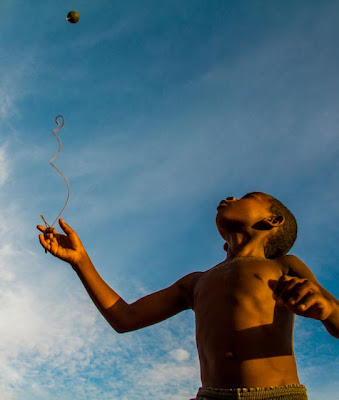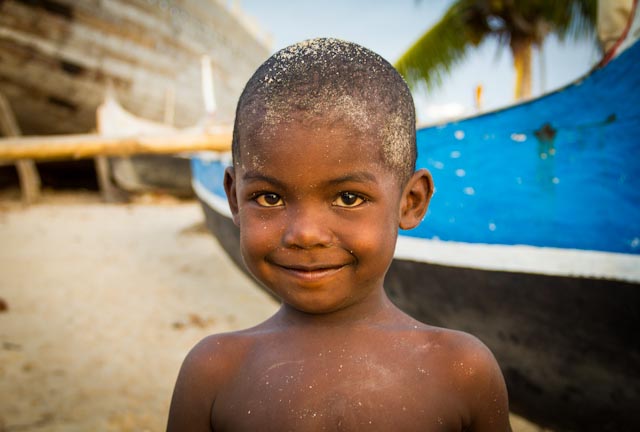We weren't sure what the words meant, but the sign was colorfully painted and featured what looked like happy kids and a tiny school house. Considering we didn't have a destination (or a map), and the Orphelinat was just 6 km away, we figured we'd go take a look.

Diversions like these don't always pay off for us, to say the least. But this one certainly did.
After six kilometers of some of the roughest roads we've ridden on the trip, we spotted another sign that looked like the one from half an hour before. We pulled to a stop and heard the unmistakable sound of children playing.
Seconds later, a Malagasy woman smiled and waved us up the dirt track. After determining that we weren't lost or in need of directions, the woman explained in her limited English that the Orphelinat was in fact the island's only orphanage, established 10 years ago by a French woman to house and educate local children. As she talked, she gave us a brief tour of the facility, introducing us to gaggles of giggling children along the way. Before we could finish the tour a group of six girls dragged us into an intense game of jump rope. Luckily, we were able to overcome our clueless-ness with height, and we would've won but Kip tripped trying to imitate a double-rope jump one of the six-yr-olds pulled on us.
 Although we like to think the kids had a good time playing with us, our shiny red motorcycle helmets stole the show. The kids passed them both around so everyone got a turn to wear one.
Although we like to think the kids had a good time playing with us, our shiny red motorcycle helmets stole the show. The kids passed them both around so everyone got a turn to wear one.We were also fortunate to meet a family from Belgium, living at the orphanage and volunteering with the kids for several weeks (the organization welcome long- and short-term volunteers). Thankfully, the Belgians spoke English and gave us some background on where the children came from. Although the organization is an orphanage, not all of the children are orphans. Many are without mothers, we were told, and their fathers were unable to care for the children, so they were brought to the orphanage. We also learned the children at Zazakely feel a very strong sense of family and community, with many of the older children who were raised in the orphanage returning frequently to visit their Zazakely brothers and sisters.
 |
| Photo #1 from the future Ansel Adams. |
From rocks, to rooftops, to lots of photos of the ground, he covered it all. As his benevolent instructor, Kip thought he did a great job, considering he'd never used a camera.
 |
| Another photo from the budding photographer. Interesting composition. |
 |
| Who is this bearded volunteer in the bead necklaces (designed and sold by village women to help fund the orphanage)? |
 |
| Liz's favorite, little Francia. |




.jpg)






































.jpg)


